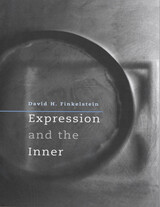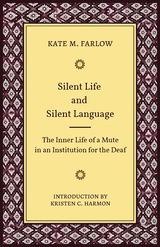2 books about Inner

Expression and the Inner
David H. Finkelstein
Harvard University Press, 2008
At least since Descartes, philosophers have been interested in the special knowledge or authority that we exhibit when we speak about our own thoughts, attitudes, and feelings. Expression and the Inner contends that even the best work in contemporary philosophy of mind fails to account for this sort of knowledge or authority because it does not pay the right sort of attention to the notion of expression. Following what he takes to be a widely misunderstood suggestion of Wittgenstein's, Finkelstein argues that we can make sense of self-knowledge and first-person authority only by coming to see the ways in which a self-ascription of, say, happiness (a person's saying or thinking, "I'm happy this morning") may be akin to a smile--akin, that is, to an expression of happiness. In so doing, Finkelstein contrasts his own reading of Wittgenstein's philosophy of mind with influential readings set out by John McDowell and Crispin Wright. By the final chapter of this lucid work, what's at stake is not only how to understand self-knowledge and first-person authority, but also what it is that distinguishes conscious from unconscious psychological states, what the mental life of a nonlinguistic animal has in common with our sort of mental life, and how to think about Wittgenstein's legacy to the philosophy of mind.
[more]

Silent Life and Silent Language
The Inner Life of a Mute in an Institution for the Deaf
Kate M. Farlow
Gallaudet University Press, 2018
Silent Life and Silent Language presents a fictionalized account of life at a Midwestern residential school for deaf students in the years following the Civil War. Based on the experiences of the author, who became deaf at the age of nine and entered a residential school when she was twelve, this historical work is remarkable and rare because it focuses on signing deaf women’s lives. One of only a few accounts written by deaf women in the 19th century, Silent Life and Silent Language gives a detailed description of daily life and learning at the Indiana Asylum for the Education of the Deaf and Dumb.
Kate M. Farlow wrote this book with the goal of giving hearing parents hope that their deaf children would be able to lead happy and productive lives. She sought to raise awareness of the benefits of deaf schools and was an early advocate for the use of American Sign Language and of bilingual education. The Christian influence on the school and on the author is strongly present in her writing and reflects an important component of deaf education at the time. Descriptions of specific signs, games, ASL story nights, and other aspects of the signing community during the 1870s will be of interest to modern students and researchers in linguistics, deaf education, Deaf studies, and Deaf history. Farlow’s work reveals a sophisticated, early understanding of the importance of access to language, education, and community for deaf individuals.
Kate M. Farlow wrote this book with the goal of giving hearing parents hope that their deaf children would be able to lead happy and productive lives. She sought to raise awareness of the benefits of deaf schools and was an early advocate for the use of American Sign Language and of bilingual education. The Christian influence on the school and on the author is strongly present in her writing and reflects an important component of deaf education at the time. Descriptions of specific signs, games, ASL story nights, and other aspects of the signing community during the 1870s will be of interest to modern students and researchers in linguistics, deaf education, Deaf studies, and Deaf history. Farlow’s work reveals a sophisticated, early understanding of the importance of access to language, education, and community for deaf individuals.
[more]
READERS
Browse our collection.
PUBLISHERS
See BiblioVault's publisher services.
STUDENT SERVICES
Files for college accessibility offices.
UChicago Accessibility Resources
home | accessibility | search | about | contact us
BiblioVault ® 2001 - 2024
The University of Chicago Press









